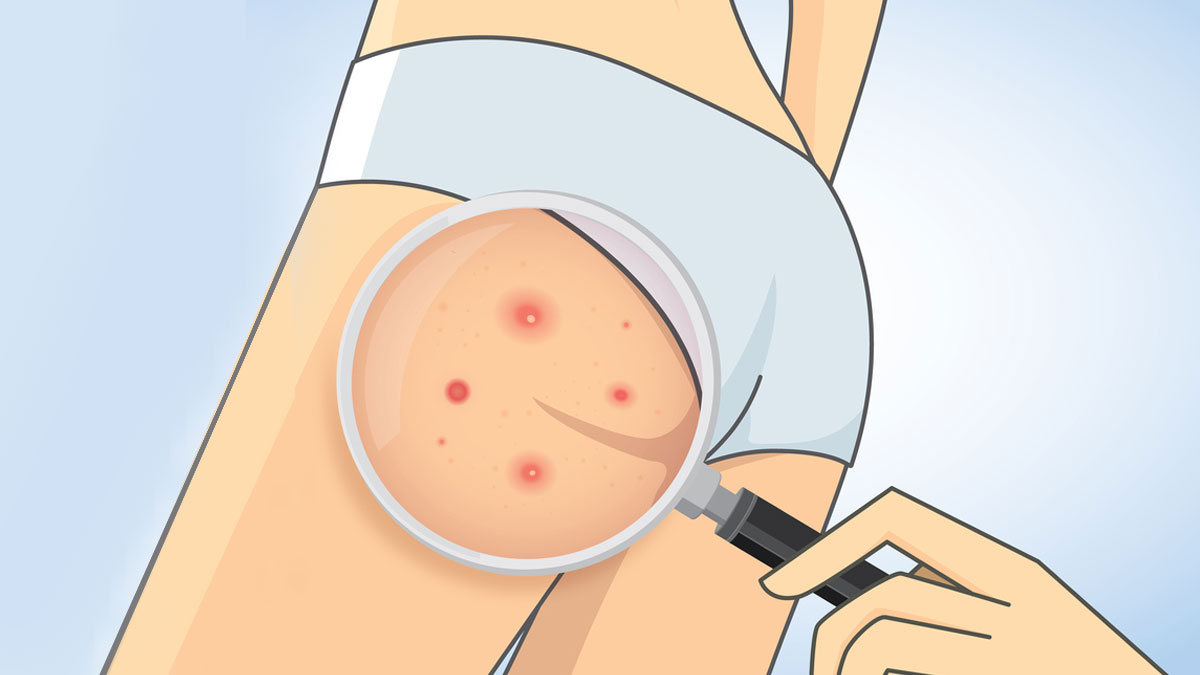Keratosis Pilaris in Teenagers: Insightful Beauty Tips
As a beautician, understanding the intricacies of skin conditions is paramount, especially when it comes to helping your teenage clients. One of the common concerns that you might encounter in your practice is keratosis pilaris in teenagers. This condition, often referred to as 'chicken skin', is characterized by small, rough bumps on the skin, typically found on the upper arms, thighs, and cheeks.
For teenagers, this can be particularly distressing, impacting their self-esteem and confidence. Thus, as a beauty expert, your role extends beyond mere skincare routines; it involves offering empathy and tailored advice that resonates with their unique skin needs.

What Causes Keratosis Pilaris in Teenagers?
The primary cause of keratosis pilaris is the buildup of keratin, a protein that protects the skin from infections. In teenagers, hormonal changes and genetic predispositions often exacerbate this condition. This buildup forms a plug that blocks the opening of hair follicles, resulting in the characteristic bumps.
Understanding this biological mechanism is crucial for beauticians looking to provide informed advice. Encouraging a skincare routine that gently exfoliates the skin and maintains hydration is key. You might want to suggest products containing alpha hydroxy acids (AHAs) or urea, which help in smoothing the skin's texture.
Effective Treatments and Skincare Tips
Addressing keratosis pilaris in teenagers involves a multi-faceted approach. For starters, emphasize the importance of keeping the skin moisturized. Hydration is crucial, and recommending a suitable hydration routine can make a significant difference.
Another important aspect is exfoliation. Suggesting gentle exfoliants helps in removing dead skin cells, preventing keratin build-up. Chemical exfoliants like lactic acid and salicylic acid can be particularly effective. You might find it helpful to recommend products that have a dual action, combining exfoliation with moisturizing benefits, such as urea creams.
Additionally, educate your clients about the role of diet and lifestyle in managing skin conditions. A well-balanced diet rich in vitamins A and E can promote healthier skin. For more insights, you can direct your clients to resources about the dietary impact on keratosis pilaris.
Professional Treatments and When to See a Dermatologist
While home care can significantly improve the skin's appearance, there are cases where professional intervention might be necessary. As a beautician, you can offer treatments like microdermabrasion or chemical peels that can further enhance skin texture.
However, it's crucial to recognize when to refer your clients to a dermatologist. If the condition persists or if there's severe inflammation, professional medical advice is advisable. A dermatologist can offer treatments such as laser therapy or prescribe stronger topical treatments.
Preventative Measures for Long-Term Skin Health
Prevention is always better than cure. Encouraging teenagers to adopt a consistent skincare routine from an early age can prevent the onset of keratosis pilaris. Advise them on the best prevention tips which include using non-comedogenic products, avoiding overly hot showers, and not picking at the bumps to prevent scarring.
Educating them on the importance of leading a healthy lifestyle, including a balanced diet and regular exercise, can also contribute to overall skin health. For more information on keratosis pilaris, you can visit the Wikipedia page for a comprehensive overview.
Conclusion
Understanding keratosis pilaris in teenagers is essential for beauticians aiming to provide holistic skincare solutions. By combining empathy, knowledge, and practical advice, you can help your clients manage this condition effectively. Remember, your guidance can significantly impact their journey towards healthier skin, boosting their confidence and self-esteem.

Frequently Asked Questions
1. Can keratosis pilaris be cured completely?
Currently, there is no cure for keratosis pilaris. However, consistent skincare can significantly reduce its appearance and manage symptoms effectively.
2. Are there specific products I should avoid recommending?
Avoid recommending products with harsh ingredients like sulfates or alcohol, as they can exacerbate dryness and irritation.
3. Is keratosis pilaris contagious?
No, keratosis pilaris is not contagious. It is a genetic condition and cannot be spread from person to person.

